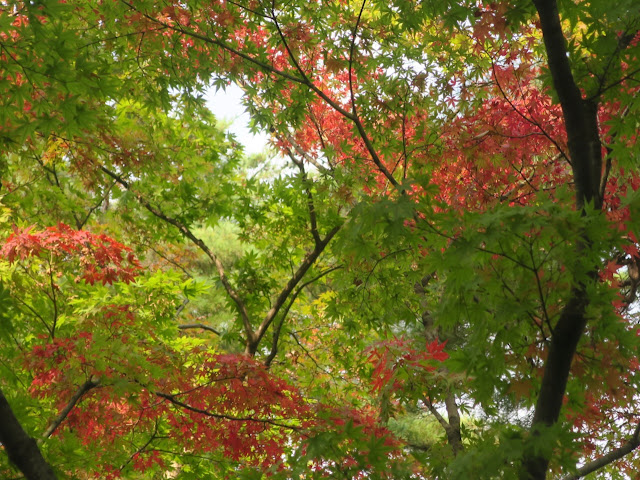Potters came from all around Japan to participate. The temptation to buy was very considerable. However, the weight and bulk of the ceramics constrained our impulses and we only bought two items.
On Saturday last week I attended a class with Master Instructor, Kosa Nishiyama at her studio. In the flower shop nearby I brought two stems of red Siberian Dogwood and a single branch of Eucalyptus. The latter had a pink flush on the stem. Instead of buying flowers I decided to use vegetables and fruit. I had earlier noticed some Dragon Fruit in a supermarket and was drawn to its vibrant pink and contrasting green leaves. Some Broccoli was also added to my shopping list. These choices meant that the colour pallet of the materials was limited to red and green.
This is the first ikebana I created with the the Dogwood and the Dragon fruit. I had placed the vessel upside down. Because of the extreme flexibility of the Dogwood I was able to secure it between the bars that joined the two "V" shaped tubes. I had impaled the fruit on a short stem of the Dogwood which lined up with the main stem. Sensei's correction was to create some space between the vessel and the Dragon Fruit by lifting it a little above the vessel. The photo shows the corrected version.
25th November 2023














.jpeg)



.jpeg)




















